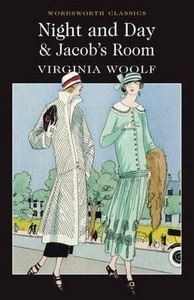Night and day x{0026} Jacob's room

Editorial Wordsworth Classics
Colección Wordsworth Classics, Número 0
Fecha de edición agosto 2020 · Edición nº 1
Idioma inglés
EAN 9781840226805
576 páginas
Libro
encuadernado en tapa blanda
Resumen del libro
Virginia Woolf's second novel, Night and Day (1919), portrays the gradual changes in a society, the patterns and conventions of which are slowly disintegrating; where the representatives of the younger generation struggle to forge their own way, for '...life has to be faced: to be rejected; then accepted on new terms with rapture'. Woolf begins to experiment with the novel form while demonstrating her affection for the literature of the past. Jacob's Room (1922), Woolf's third novel, marks the bold affirmation of her own voice and search for a new form to express her view that 'the human soul ...orientates itself afresh every now x{0026} then. It is doing so now. No one can see it whole therefore.' Jacob's life is presented in subtle, delicate and tantalising glimpses, the novel's gaps and silences are as replete with meaning as the wicker armchair creaking in the empty room.
Biografía del autor
Hija del conocido hombre de letras Sir Leslie Stephen, Virginia Woolf nace en Londres el 25 de enero de 1882, y vive, desde su infancia, en un ambiente densamente literario. Al morir su padre, Virginia y su hermana Vanesa dejan el elegante barrio de Kensington y se trasladan al de Bloomsbury, más modesto y algo bohemio, que ha dado nombre al brillante grupo formado alrededor de las hermanas Stephen. En 1912 se casa con Leonard Woolf y juntos dirigen la Hogarth Press. El 28 de marzo de 1941, la genial novelista sucumbe a la grave dolencia mental que la aqueja desde muchos años atrás y se suicida ahogándose en el río Ouse. Además de Las olas (1931), Virginia Woolf fue autora de novelas tan importantes como El cuarto de Jacob (1922), La señora Dalloway (1925), Al faro (1927), Orlando (1928), Los años (1937) y Entre actos (1941).








